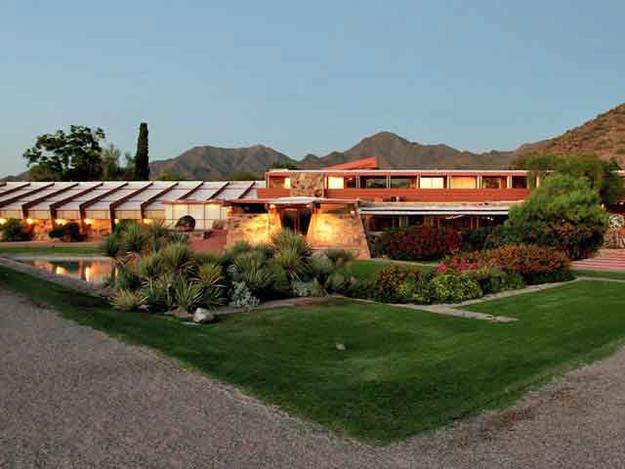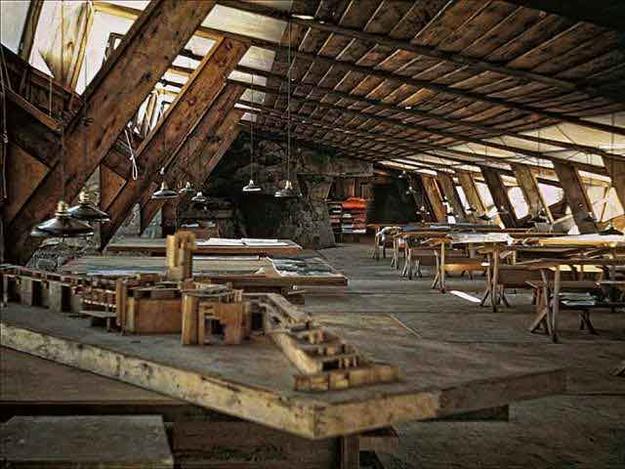Taliesin West
2010 World Monuments Watch
Seamlessly woven into the rugged terrain of the American southwest, Frank Lloyd Wright observed that Taliesin West “belonged to the Arizona desert as though it had stood there during creation.” Wright designed Taliesin West as his winter home and studio for his family and apprentices. The main complex was built between 1937 and 1942, and the architect continued to add structures and make modifications until his death in 1959. Embodying essential modernist concepts and striving for functionality, Wright used canvas roofing, permitting natural light to descend on his architectural laboratory. The structure’s linear design hovers over the warm earth, reflecting the region’s desert with angled red beams. Multiple structures complete the complex, each unique in their own right while harmonizing the organic, unified vision Wright sought. As it has evolved over the last half century, Taliesin West has come to encompass and represent Wright’s ideals, faithful to place and time, but always striving for innovation. Like its Wisconsin counterpart, Taliesin, Taliesin West served as a laboratory of design experimentation for Wright and his apprentices, thereby compounding today’s conservation challenges. Comprehensive studies are necessary to ensure the preservation of one of Frank Lloyd Wright’s true masterworks, and to secure its place in his architectural legacy.
Since the Watch
In July 2019, UNESCO designtated eight works by Frank Lloyd Wright as World Heritage sites, including Taliesin West and Taliesin, another Watch site. Wright is the only American architect to be honored with such a designation.



